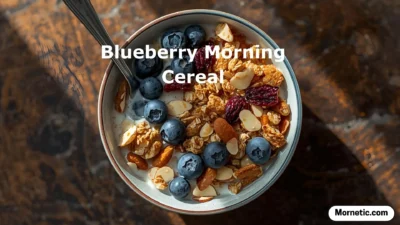The familiar cadence of Morning Joe has been a staple of American political discourse for over a decade. A blend of news analysis, candid conversation, and heavyweight political interviews, the show carved out a unique and influential niche. However, the media landscape is shifting, and the latest Nielsen data points to a significant Morning Joe ratings decline. This isn’t just a blip on the radar; it’s a complex story of changing viewer habits, a volatile political cycle, and increased competition. What’s behind this downward trend, and what does it signal for the future of cable news morning shows? This comprehensive analysis breaks down the numbers, the reasons, and the potential road ahead for the MSNBC flagship program.
Understanding the Numbers: What the Ratings Actually Say
Before we diagnose the cause, we must understand the symptom. The Morning Joe ratings slump is reflected across several key metrics that networks use to gauge success.
- 📉 Total Viewership Decline: Year-over-year data shows a noticeable drop in the total number of viewers tuning in on an average day.
- 🎯 Key Demographic Erosion: More critically, the show has seen a softening in the coveted 25-54 age demographic, which advertisers pay a premium to reach.
- 📊 Relative Performance: While still a strong performer for MSNBC, the gap between it and its direct competitors on CNN and Fox News has fluctuated, sometimes narrowing in ways that concern network executives.
- 🔄 Quarterly Fluctuations: The decline hasn’t been a straight line. Certain major news events, like primary debates or significant political developments, still cause temporary spikes in viewership.
The Streaming Revolution: A Fundamental Challenge
Perhaps the most significant factor affecting not just Morning Joe, but all linear television, is the rise of streaming services. The way people consume news and entertainment has fundamentally changed.
- Cord-Cutting Acceleration: Millions of households are canceling their traditional cable packages each year. This directly shrinks the potential audience pool for any cable news program.
- On-Demand News Consumption: Viewers, especially in younger demographics, prefer to get their news on their own schedule. They watch clips on YouTube, listen to podcasts, or scroll through news aggregators.
- MSNBC’s Own Digital Strategy: The network’s own streaming platform, Peacock, and its digital highlights on social media can cannibalize the live linear audience, as fans can get the “best of” Morning Joe without watching the full broadcast.
Political Cycle Fatigue and Shifting Audience Interests
Morning Joe built its brand on deep-dive political analysis during the Trump presidency, a period of intense and constant news. The current political environment, while still divisive, has a different rhythm.
- Audience Burnout: After nearly a decade of high-octane political warfare, a segment of the audience is experiencing genuine news fatigue and is actively seeking out non-news alternatives in the morning.
- The “Biden Bump” vs. The “Trump Boom”: The show thrived during the Trump administration as a voice of opposition and analysis. The current administration generates less of the daily, chaotic news cycle that fueled record ratings for many news outlets.
- Shifting Priorities: With major issues like the economy and international conflicts at the forefront, some viewers may be seeking different perspectives or more issue-focused programming rather than the insider political conversation Morning Joe provides.
The Intensifying Competitive Landscape
The morning television battlefield is more crowded than ever. Morning Joe isn’t just competing with Fox & Friends and CNN This Morning anymore.
- Fox & Friends’ Consistent Base: The Fox News morning show maintains a loyal and consistent viewership that has proven resistant to significant decline, providing steady competition.
- CNN’s Rebuilding Efforts: While CNN has faced its own ratings challenges, its morning show reshuffles represent a direct attempt to capture a segment of the audience.
- The Rise of Local and Network Morning Shows: Programs like CBS Mornings and Good Morning America have invested heavily in hard news segments, appealing to viewers who want a mix of news, weather, and lifestyle content.
- Digital-Native Competition: Platforms like YouTube, with creators and news channels, and podcasts offer analysis and commentary that directly compete for the attention of the politically engaged audience Morning Joe targets.
The Evolving Format: Is the Show’s Style Still Resonating?
The format of Morning Joe—long-form, conversational, and often meandering—was once a refreshing alternative to soundbite-driven news. Is it still what today’s audience wants?
- Attention Span Challenges: The modern media consumer is often multitasking. A three-hour program requiring sustained attention may be a harder sell in an era of TikTok and Instagram Reels.
- Repetition of Topics: Critics and some viewers have noted that the show can sometimes spend excessive time on a single topic, which can alienate those seeking a broader news overview.
- The Host Dynamic: The chemistry between Joe Scarborough and Mika Brzezinski is the show’s engine. For some, it’s endearing; for newer viewers, the insider dynamic and personal anecdotes may not be as compelling.
The Scarborough Effect: How Host Politics Influence Viewership
Joe Scarborough, a former Republican congressman, has been openly critical of the current direction of the GOP. This political evolution has undoubtedly influenced the audience.
- Alienation of Moderate Republicans: Some viewers who initially appreciated a conservative voice critical of the Democratic party may feel alienated by his sharper critiques of his own former party.
- Solidification of a Liberal Base: Simultaneously, the show has become a firm favorite among centrist and liberal Democrats, which solidifies one base but potentially limits its broader appeal.
- The “Preaching to the Choir” Dilemma: In a polarized media market, the show risks primarily speaking to an audience that already agrees with its hosts’ perspectives, which can limit growth.
The MSNBC Ecosystem: Lead-In and Network Branding
A show’s ratings are partially dependent on the performance of the programs that lead into it and the overall strength of the network’s brand.
- Early Morning Lead-In: The performance of MSNBC’s early morning news blocks sets the table for Morning Joe’s audience. Any weakness there can have a ripple effect.
- Primetime Synergy: The tone and focus of MSNBC’s primetime lineup, which is more overtly progressive, can shape the perception of the entire network, including Morning Joe.
- Weekend vs. Weekday Dynamics: The show’s weekend repeats or special editions do not perform with the same strength, indicating the value is in the live, weekday chemistry and timeliness.
The Impact of Major News Events
While the overall trend is down, Morning Joe, like all news programs, is still subject to the power of a major news story. These events can temporarily reverse the decline.
- Election Cycles: The upcoming 2024 presidential election is expected to provide a significant boost to all news ratings, potentially masking the longer-term decline for several months.
- Unfolding Crises: Major international events, Supreme Court rulings, or economic shocks can drive viewers back to trusted, analytical sources for real-time understanding.
- Exclusive Interviews: Landing a high-profile political figure for a lengthy, substantive interview remains a key way to draw in a large audience for a day and introduce new viewers to the show’s format.
The Social Media Conundrum: Clips vs. Tuning In
Morning Joe has a robust social media presence, but this is a double-edged sword in the context of measuring ratings decline.
- Viral Clip Culture: The most impactful moments from the show are often packaged into clips and posted on X (Twitter), YouTube, and Facebook within hours.
- The Illusion of Engagement: A clip with millions of views does not translate directly into Nielsen ratings. A viewer may feel they’ve “seen” Morning Joe by watching a three-minute clip online, removing the incentive to watch the three-hour broadcast.
- Monetization Difference: While digital video views are monetizable, the advertising revenue from a linear TV viewer is still generally higher than that from a social media viewer.
Demographic Shifts and the Generational Divide
The core audience for cable news is aging. The challenge for Morning Joe and its competitors is to attract a new generation of viewers.
- Graying of the Audience: The most loyal viewers for cable news are typically over the age of 55. This is not a sustainable long-term model.
- News Consumption of Gen Z and Millennials: Younger demographics are overwhelmingly getting their news from social media, podcasts, and late-night comedy shows, not from appointment television.
- Brand Perception: To a younger viewer, Morning Joe may be perceived as a show for their parents, making it difficult to break through and build new habitual viewers.
Advertiser Sentiment and Revenue Implications
Ratings are the currency of television, and a sustained decline inevitably catches the attention of the advertising department.
- Lower Ratings, Lower Ad Rates: As viewership drops, MSNBC cannot command the same premium for commercial slots during Morning Joe.
- Audience Quality over Quantity: Networks often argue that the Morning Joe audience is highly educated, affluent, and influential, allowing them to maintain stronger ad rates than the raw ratings might suggest.
- Package Deals: Advertisers often buy packages across a network’s entire daypart. The strength of MSNBC’s primetime lineup can help offset softer performance in the morning during ad sales negotiations.
The Road to Recovery: Potential Strategies for MSNBC
So, what can be done to counter the Morning Joe ratings decline? A multi-pronged strategy is likely required.
- Embrace a Hybrid Broadcast/Digital Model: Fully integrate the live show with exclusive digital content for Peacock and social media, creating a unified experience that rewards full-program viewers while capturing the on-demand audience.
- Refresh the Format Subtly: Introduce more structured segments, new regular contributors from diverse backgrounds, and interactive elements to break up the long-form conversation without losing the show’s core identity.
- Cross-Promotion with Digital Stars: Leverage the popularity of MSNBC’s digital-native hosts and podcasters to introduce their audiences to the Morning Joe platform.
- Focus on Solutions-Based Journalism: Alongside political analysis, incorporating more segments on how policies affect real people and potential solutions to problems could broaden appeal and combat viewer fatigue.
A Comparative Look: How Other Cable News Morning Shows Are Faring
It’s important to view the Morning Joe viewership drop in the context of the entire cable news morning landscape.
- Fox & Friends: Maintains a strong, loyal base but is also facing the systemic challenges of cord-cutting and an aging audience.
- CNN This Morning: The network has struggled to find a consistent morning formula, and its ratings have been volatile, indicating that the challenge is industry-wide.
- The Big Picture: All three major cable news networks are navigating a transition from purely linear platforms to multi-platform media companies. Ratings are just one piece of a much larger puzzle.
Conclusion
The Morning Joe ratings decline in 2024 is a nuanced story, more of a transformation than a simple failure. It is a symptom of broader tectonic shifts in media consumption, political engagement, and technological habit. The show is not facing obsolescence, but it is navigating a critical juncture. Its future success will depend less on simply reversing a Nielsen number and more on its ability to adapt its influential brand of journalism for a new era. This means successfully monetizing its digital audience, refreshing its format to retain core viewers while attracting new ones, and proving that substantive, long-form conversation still has a vital place in a fragmented media world. The 2024 election will provide a temporary boost, but the long-term health of Morning Joe will be determined by how well it evolves beyond its traditional cable box confines.

Grace is a lifestyle writer from California who loves starting mornings with positivity. At Mornetic, she shares uplifting quotes and cheerful messages to brighten your day.




